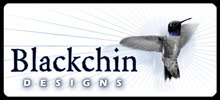
Right now, I appreciate my time outdoors with birds more than ever. School started up again, and I'm teaching a ginormous, pathologically overenrolled general ed course, and, as I've been telling my friends, currently have more teaching assistants than I had students in some of my classes last year. And I've found that talking into a microphone to 400 people isn't nearly as scary as trying to figure out what to do with the 50-plus people on the wait list for my class, each of whom absolutely must take it this term in order to graduate in time. Aaargh!
Okay, back to the birds. Saturday morning, I woke up early, determined to find some cool migrant warblers. Glenn was recovering from some gnarly oral surgery, so it was just me again. I went back to Huntington Central Park, since I knew that Blackpoll Warblers and both American and Painted Redstarts had been seen there over the past week. Alas, I found none of these. But I did get to see some old winter friends again for the first time of the season: Yellow-rumped Warblers, White-crowned Sparrows, and a huge number of Townsend's Warblers. I also found a Hermit Thrush (with a very obviously reddish tail and grey flanks) flying out of the island and into a nearby thicket of bushes.
Saturday afternoon, I birded Talbert Nature Reserve and the bike path along the Santa Ana River between Talbert and Huntington State Beach. No interesting warblers (save something that could only have been an exceptionally large Yellow Warbler—bright yellow, dull wings, no eyering/eyeline, thin bill), but lots of other good stuff—a pair of Ospreys, a pair (male and female) of Northern Harriers, a juvenile Cooper's Hawk, lots of White-crowned Sparrows (again, the first I've seen there this season)). The most notable bird of the outing was the Reddish Egret I've been seeing there fairly regularly over the past few weeks—this time, I brought my little camera, and actually got a photo of the bird!

Yes, I know this is lame. (Glenn saw it and promised to set me up with one of his old cameras and a decent lens.) The bird was actually much closer to me than it appears in this photo.
This afternoon, I dragged Glenn out of the house to San Joaquin marsh—a very different place from last week. The river running parallel to Riparian View was nearly dry and free of birds (last week it was flooded and filled with dozens of herons and egrets), and the first two ponds by the front of the reserve had been drained. Still, there were a number of White Pelicans in Pond C, a Spotted Sandpiper and a Sora in Pond D, Redheads in Pond 1, and a pair of White-tailed Kites in the back area.
San Joaquin wasn't as birdy as I would have liked, but there's always something peaceful and sweet about being out there on an autumn Sunday afternoon. The air smells of sage, and the sun seems to hit the trees—now just turning from green to yiellow and red—differently than the rest of the year. No matter what East Coast expats say, there are definitely seasons in Southern California. If you can't tell from the angle of the sunlight off the trees, you can tell from the birds.


















